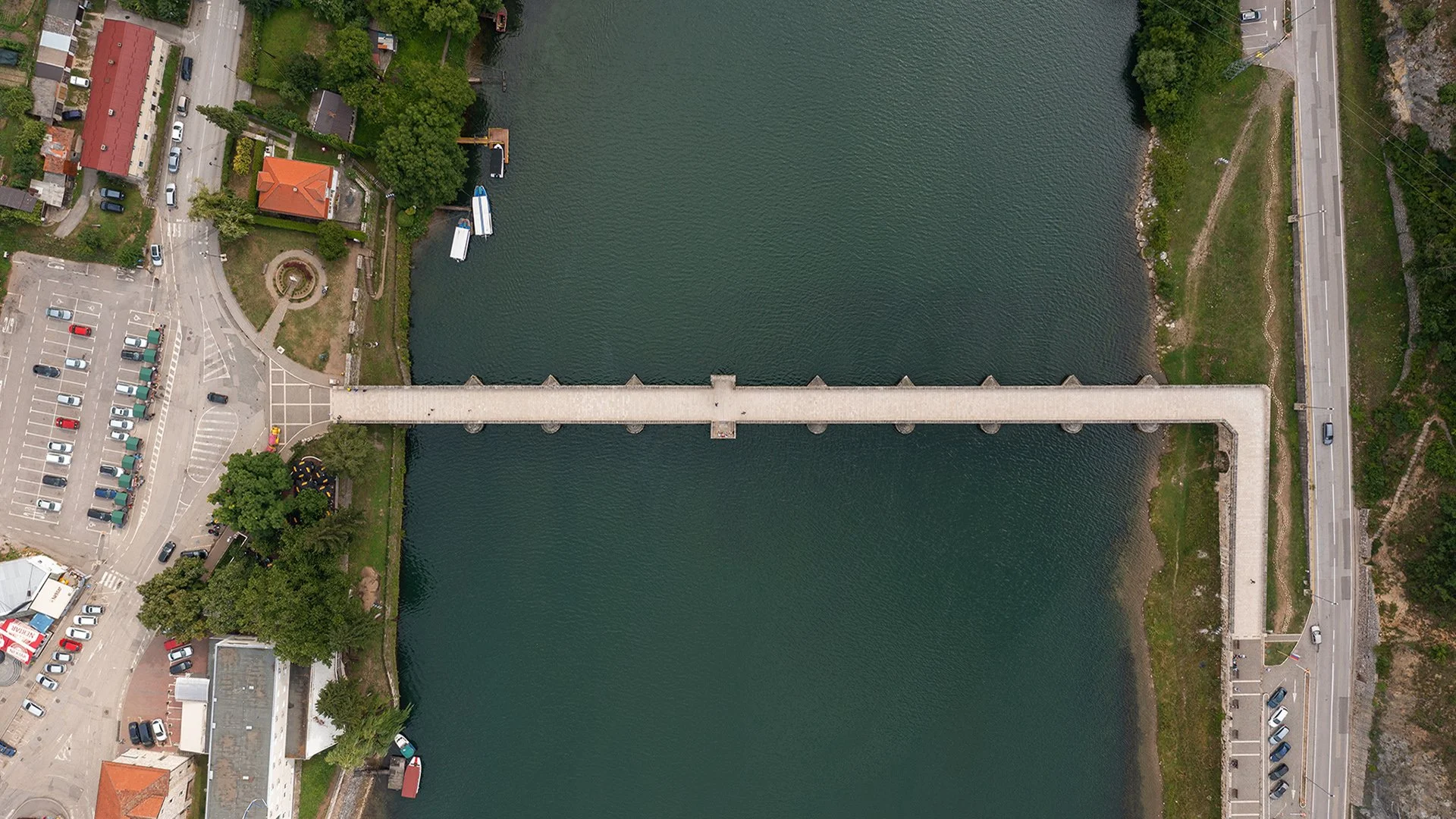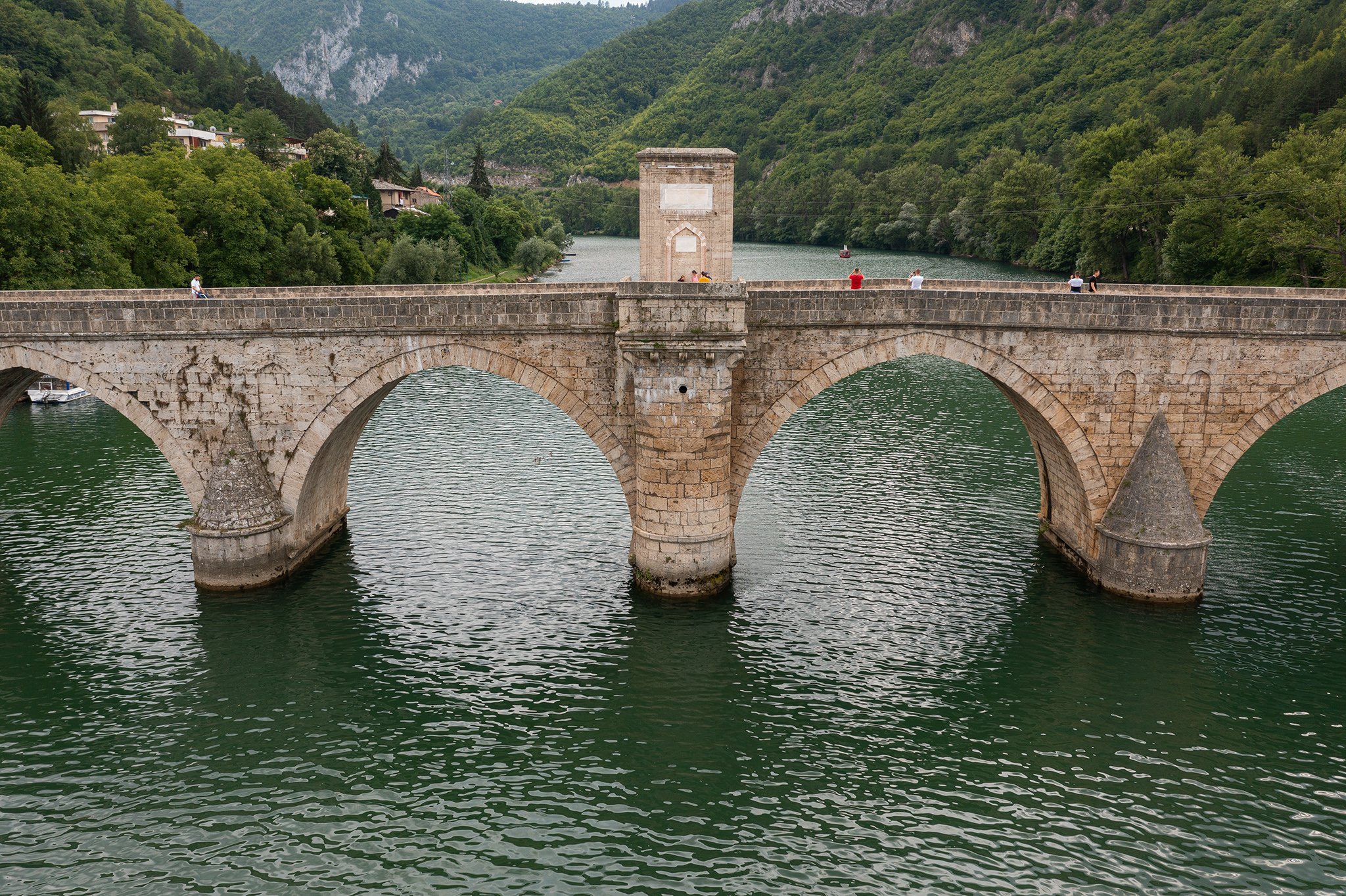
BRIDGE OF MEHMED-PAŠA SOKOLOVIĆ IN VIŠEGRAD
(VIŠEGRAD ĆUPRIJA)
Author: Prof. Aida Idrizbegović Zgonić, PhD, Faculty of Architecture of University of Sarajevo
Photo & video: Mirza Hasanefendić
The bridges of Bosnia and Herzegovina are its most truthful expression of the state of civilization and architectural creation. Their beauty, structure and utility are combined with historic ambient and natural landscapes of Bosnia and Herzegovina. Framed by the mountains and ribbons of rivers, the country carries indelible imprints of diverse and interwoven culture. Among the most enduring of these are the Ottoman bridges, silent yet eloquent testimonies of Bosnia and Herzegovina's intricate historical past and a symbol of its resilient spirit.
Constructed during the peak of the Ottoman Empire from the 15th to the late 17th century, these architectural feats symbolize the basic human needs for connections, travel and trading routes. Their elegant structures and monumental presence encapsulate a confluence of cultures, combining the refined engineering practices of the Ottoman period with the aesthetic sensibilities of local Bosnian architectural traditions.
Perhaps the most iconic of these Ottoman bridges, and indeed a cornerstone of Bosnian cultural heritage, is the Stari Most or Old Bridge in Mostar. Originally constructed in the 16th century by Mimar Hayruddin, a student of the famous architect Mimar Sinan, it gracefully arcs over the cerulean Neretva River. Stari Most is a marvel of ancient engineering, its elegance belying the robustness of its structure. Though this enduring symbol was tragically destroyed during the War in 1993, the bridge was reconstructed, stone by stone, re-emerging to reclaim its rightful place in the heart of Mostar, symbolizing the country's resilience and determination. Its recognition by UNESCO as World Heritage after the reconstruction effort sent a powerful message of hope. Its daring single arch span almost seems to defy gravity and projects a material and ethereal image of civilization.
The Mehmed Paša Sokolović Bridge is an imposing structure, the grandeur of which is only enhanced by its location over the picturesque Drina River. This masterpiece, the creation of is a unique blend of utility and aesthetic design, reflecting the engineering prowess of the Ottoman period. Constructed using eleven robust masonry arches, the bridge spans the breadth of the emerald Drina, mirroring its magnificence in the water below. But beyond its aesthetic and architectural importance, the Mehmed Paša Sokolović Bridge serves a significant geographical role. It stands as a sentinel at the eastern gateway to Bosnia and Herzegovina, inviting travelers into the heart of the country. Its recognition as a UNESCO World Heritage Site is a nod to its historical, cultural, and architectural significance.
Yet, there are countless other Ottoman bridges in Bosnia and Herzegovina, each with its own unique story. Consider the enchanting Kriva Ćuprija (Curved Bridge) in Sarajevo or the storied Arslanagić Bridge in Trebinje. These bridges served not just as passageways over rivers, but also as vital social hubs, fostering interaction and camaraderie among travelers and locals. These bridges are, therefore, not just mere architectural constructs, but living embodiments of the land's vibrant social fabric.
The Ottoman bridges in Bosnia and Herzegovina are the essence of the architectural aesthetic appeal and structural marvel, but also for their enduring symbolism. They are symbols of Islamic and ottoman civilization fully immersed into local culture, as testimonies to the centuries-long dialogue between the East and the West. They stand as monuments of a an era, yet they are firmly ingrained in the country's contemporary identity, bridging the historical divide. They are constant reminders of the shared human experience, our interconnected histories, and our collective pursuit of progress.
Furthermore, the bridges serve as an allegorical representation of Bosnia and Herzegovina's journey. A country that has crossed tumultuous waters of war and strife, it stands today like these bridges: resilient, proud, and forward-looking. The country has embarked on a journey towards reconciliation and unity, a process much like the reconstruction of the Stari Most.
The bridges of Bosnia and Herzegovina serve as an inspirational testament to the power of resilience, unity as most profound expression of utility. They bridge not only the physical gaps between riverbanks, but also the metaphysical ones between past, present, and future, between East and West, and between adversity and triumph. As we walk these bridges, we are reminded of the potential in every human society to forge connections, to endure despite challenges, and to create lasting symbols of utility, structure and beauty.
























